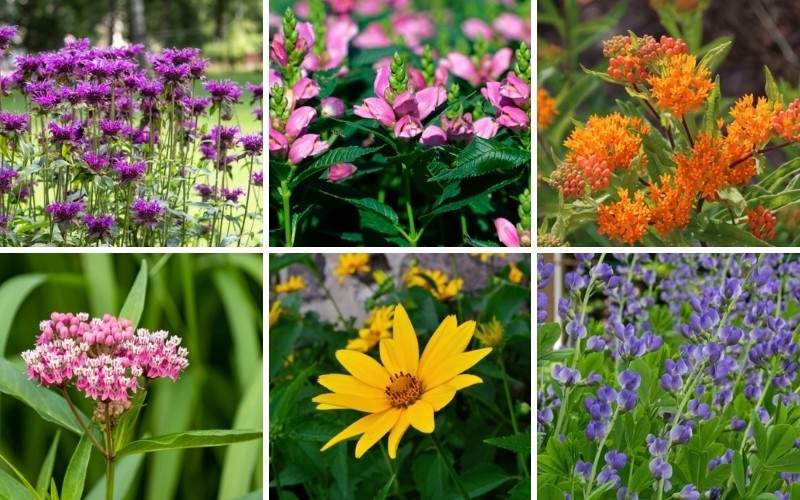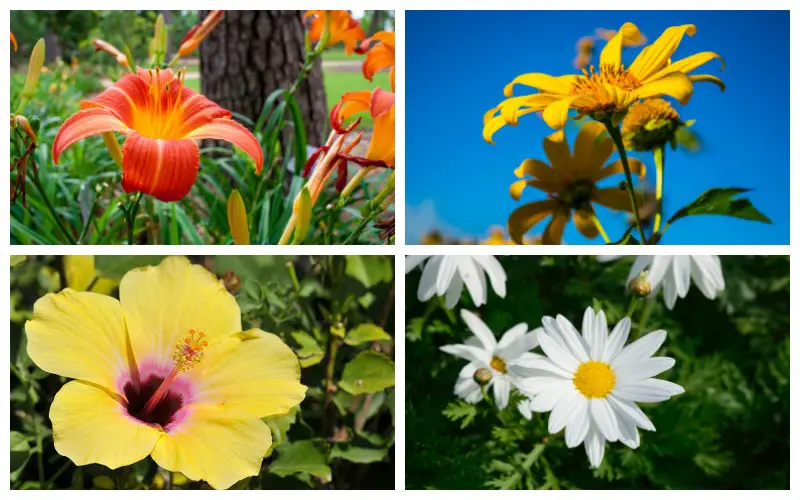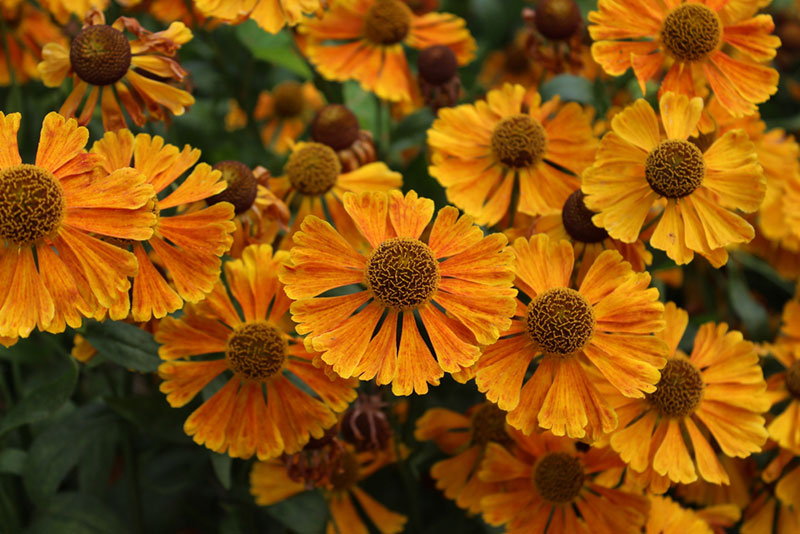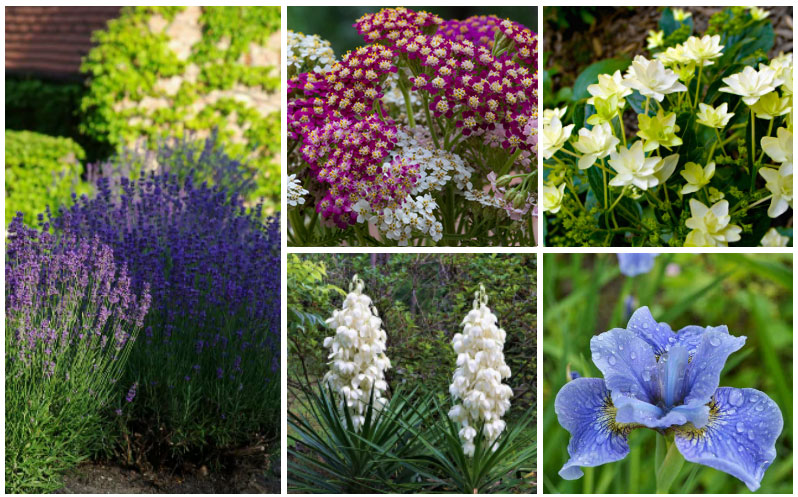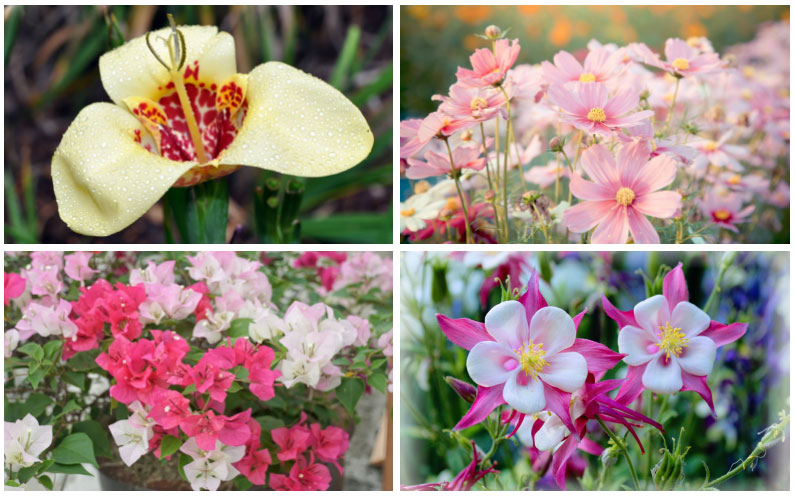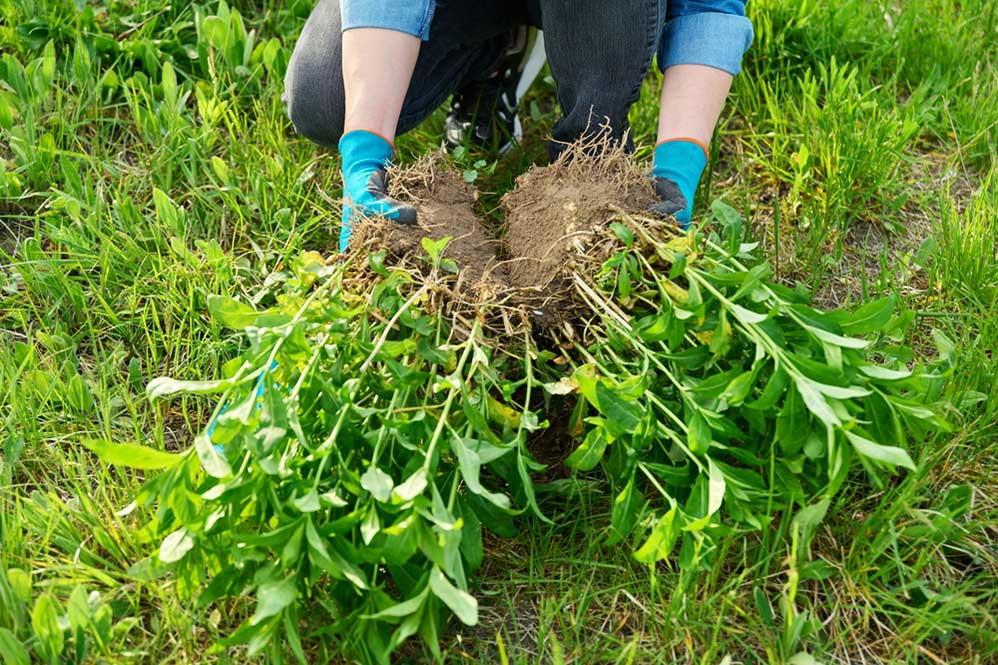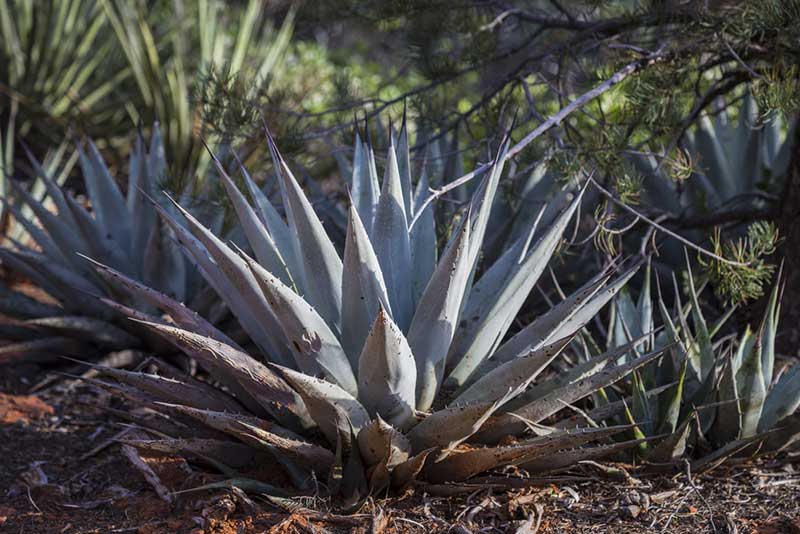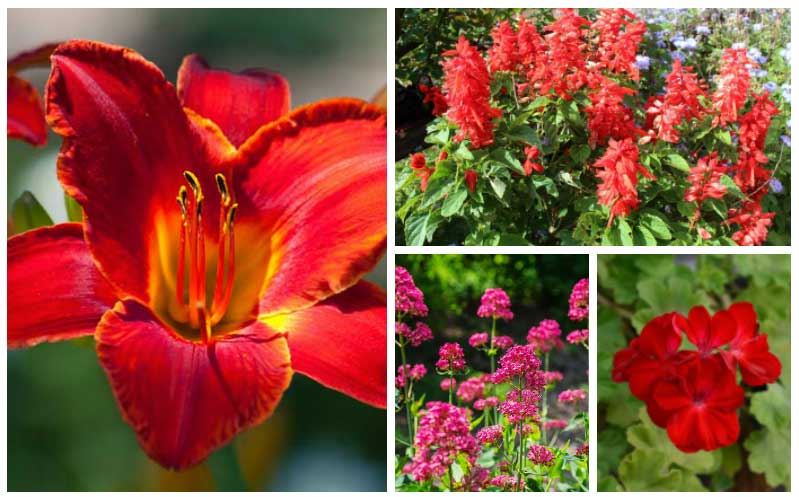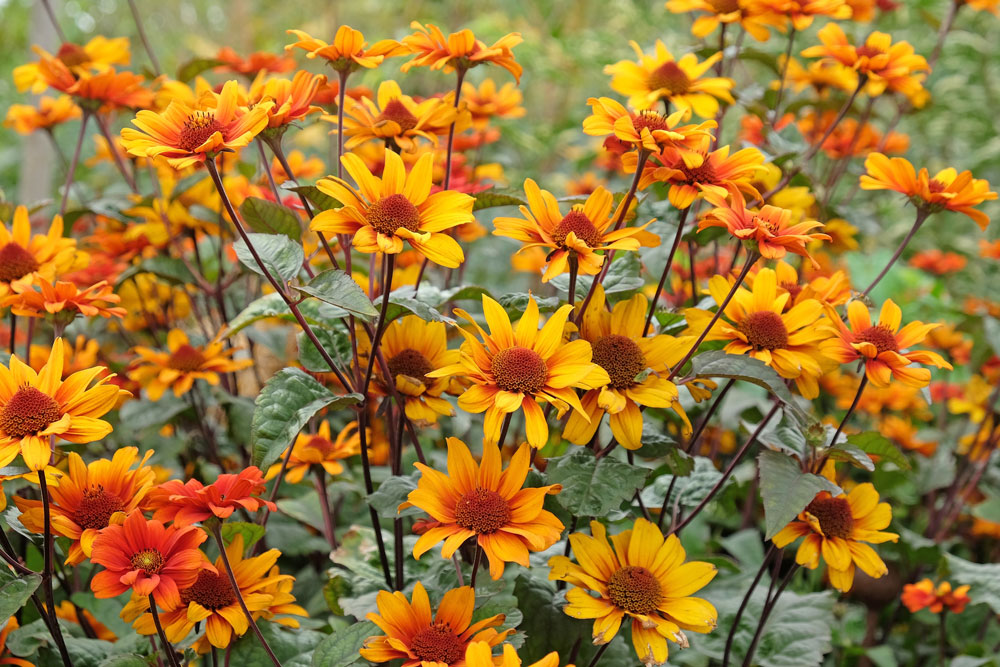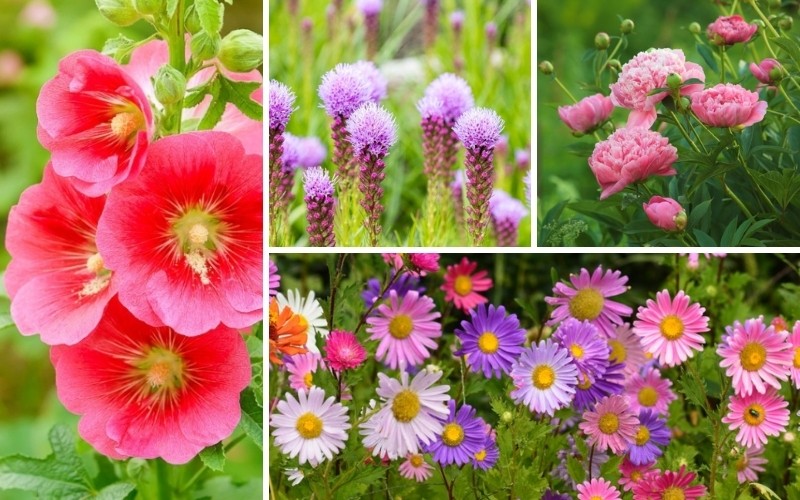
The state of South Dakota encompasses USDA plant hardiness zones 3b to 5b and has relatively short summers. But that doesn’t mean you are limited on the types of perennials you can grow in your flowerbed.
Many perennials are hardy in USDA plant hardiness zones 3 through 8, making them suitable for growing in your South Dakota perennial bed. The perennials described here have their hardiness zones listed and should perform well in most parts of South Dakota. However, you should be aware that the hardiness zone can vary between cultivars of the same plant. For that reason, it is prudent to check the hardiness zone on the plant identification label of any perennials you are considering purchasing.
Perennial Sunflowers (Helianthus spp.)
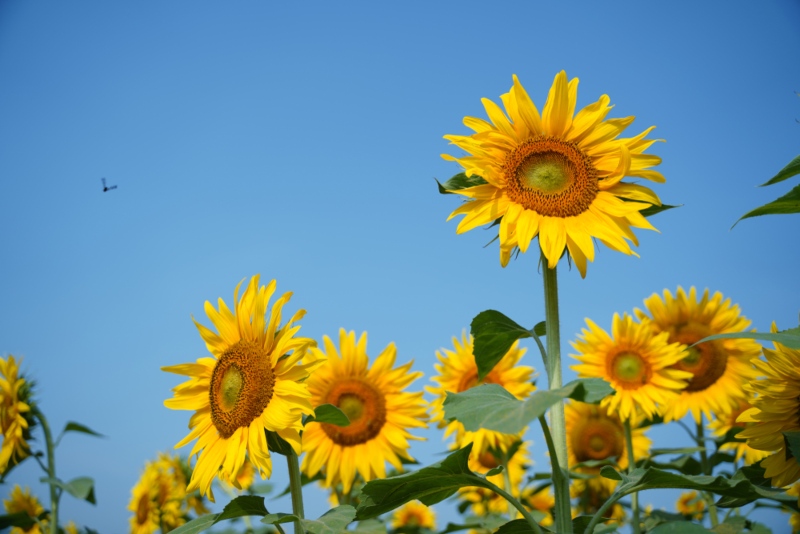
Perennial sunflowers may not be as massive as annual sunflowers, but they are beautiful in their own right. These hardy perennials produce masses of yellow or orange flowers that look like miniature sunflowers. They reach heights of 3 to 10 feet, depending on the cultivar. These flowers produce masses of blooms in late summer and early fall. They prefer full sun and average soil. They attract both bees and butterflies and are hardy in USDA plant hardiness zones 4 through 9.
Blazing Stars (Liatris spp.)
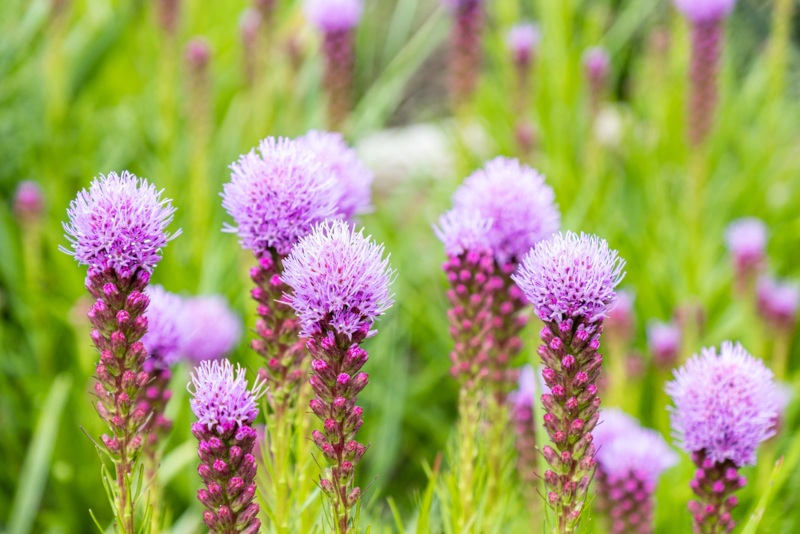
Blazing stars add height and color to the summer garden with their tall spires lined with hundreds of tiny star-shaped flowers in shades of blue or purple. When in bloom they appear fluffy or feathery, earning them the common name of gayfeather. Blazing stars perform best in a sunny location with fertile, well-drained soil. They are hardy in USDA plant hardiness zones 3 through 9.
Coreopsis (Coreopsis spp.)
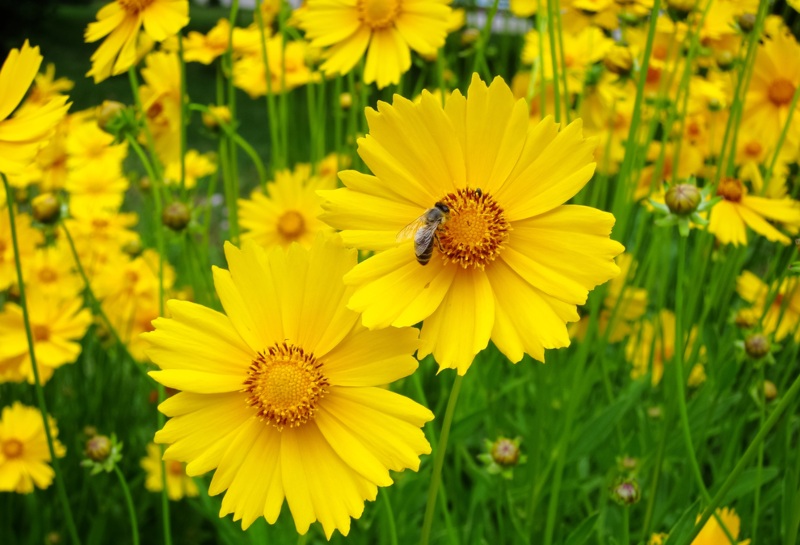
Coreopisis includes a wide range of cultivars from common yellow tickseed to the delightful fushia colored “Show Stopper“. The flowers can be either single or double petaled and range in height from 2 to 6 feet, depending on the cultivar. They prefer full sun, but will grow in partial shade. Coreopsis prefers rich, moist soil, but will grow in nearly any soil as long as it is well drained. Coreopsis is hardy in USDA plant hardiness zones 3 through 9.
Blanket flower (Gaillardia spp.)
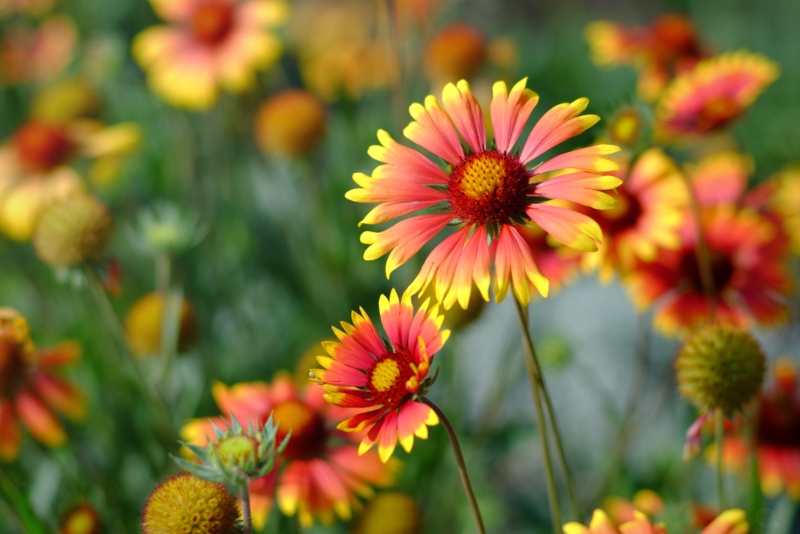
Blanket flower puts on quite a show from early to mid-summer until the frost in the fall. These daisy-like flowers feature yellow or orange petals banded with deep orange, red or bronze with a dramatic dark center. They grow to heights of 2 to 3 feet and grow best in full sun. Blanket flowers like average, well-drained soil. They are hardy in USDA plant hardiness zones 3 through 9.
Peonies (Paeonia spp.)
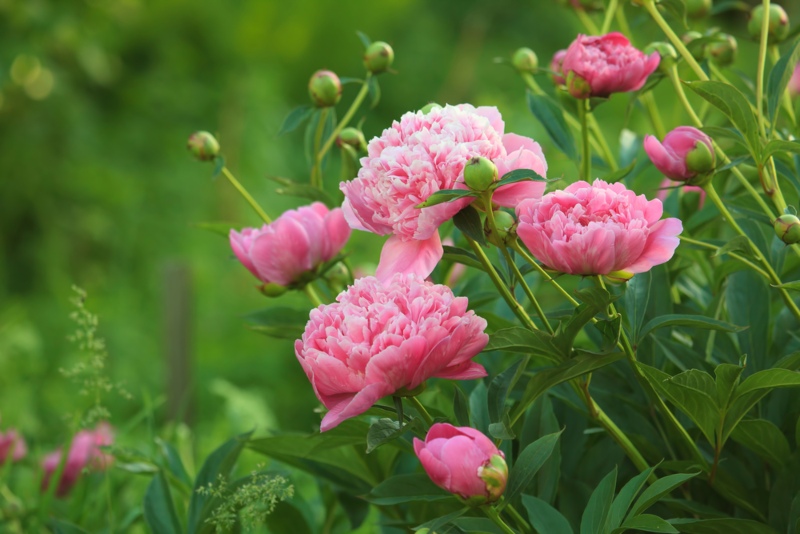
Beautiful peonies bring the garden alive with color and fragrance in late spring to early summer. The massive blooms can be either single or double petaled and range in color from solid white, pink or red to lovely variegated varieties. Many feature a stunning yellow eye. Peonies grow to heights of 3 to 4 feet and like rich, well-drained soil. They grow best in full sun but will tolerate partial shade. Peonies are hardy in USDA plant hardiness zones 3 through 8.
Hollyhocks (Althaea rosea)
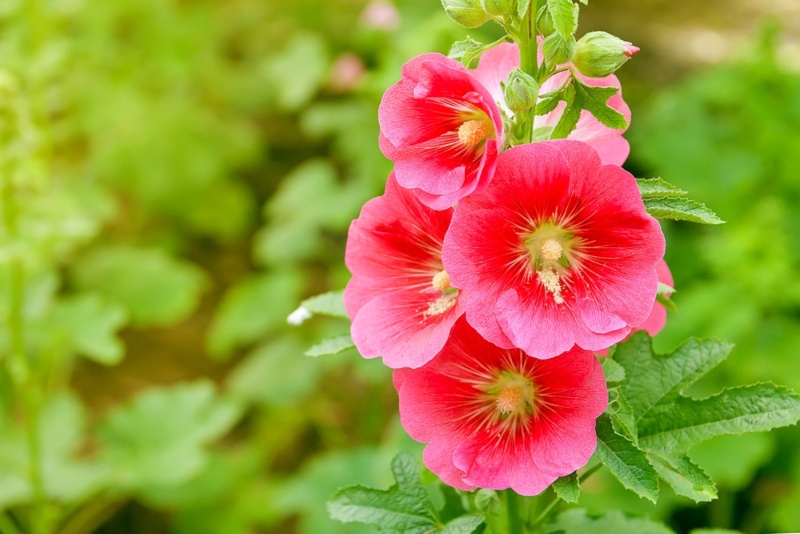
Hollyhocks make a delightful addition to the flowerbed with their tall spires of papery blooms. Flowers may be either single or double petaled and range in color from pastel pinks, whites and yellow to impressive shades of red, purple and rose. They grow to heights of 9 feet. They grow best in humus-rich soil that drains well and prefer full sun. Hollyhocks are hardy in USDA plant hardiness zones 3 through 8.
Asters (Aster spp.)

Asters put on a show in late summer and keep on blooming until the frost arrives in the fall. These daisy-like flowers have thin petals giving them a frilly appearance. The range in color from soft shades of purple, blue and pink to impressive shades of rose and red, depending on the cultivar. They grow to heights of 2 to 4 feet and prefer full sun. Asters will grow in nearly any soil but perform best in rich, moist soil. They are hardy in USDA plant hardiness zones 3 through 10.
Oriental Poppy (Papaver orientale)
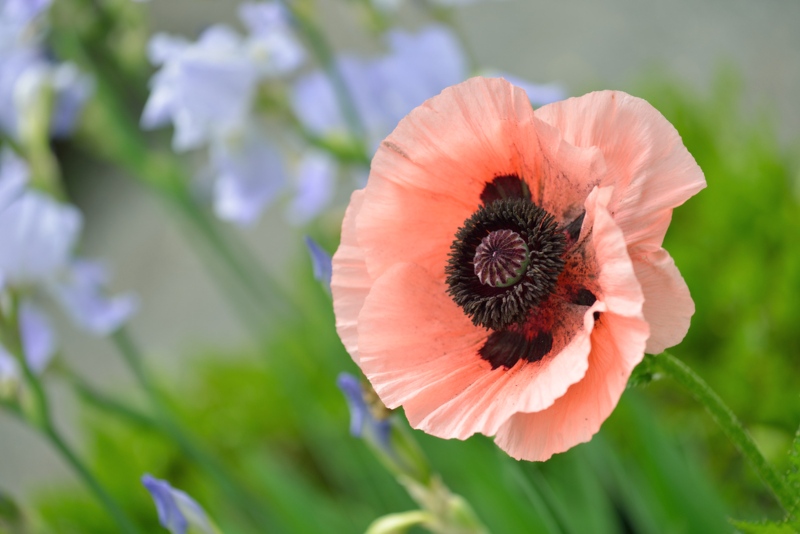
Oriental poppies put on a show in midsummer with their cup-shaped blooms and frilly foliage. These flowers simply sway in the breeze bringing the garden to life with color and movement. They range in color from brilliant shades of yellow, orange, red and pink with some lovely shades of peach and salmon. They grow to heights of 1 to 3 feet and prefer fertile, well-drained soil. Oriental poppies do best in full sun. They are hardy in USDA plant hardiness zones 3 through 9.
Phlox (Phlox spp.)
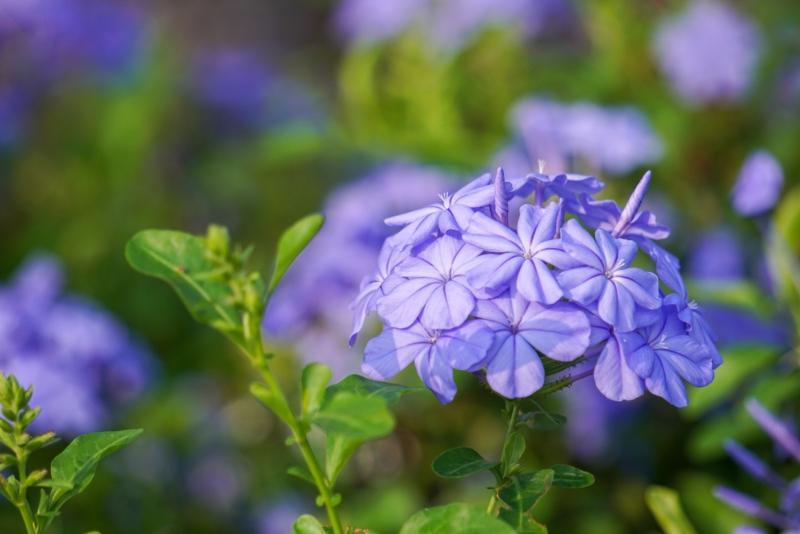
Garden phlox bloom for several weeks in mid-summer as they fill the air with their heady, sweet fragrance. They produce masses of tiny flowers on a conical flower head. The flowers range in color from traditional magenta or white to wonderful shades of red or rose with several attractive bicolors trimmed in white. Phlox grow to heights of 2 to 4 feet and prefer moist soil. They thrive in either full sun or partial shade. Garden phlox are hardy in USDA plant hardiness zones 4 to 8, depending on the cultivar.
Speedwell (Veronica spicata)
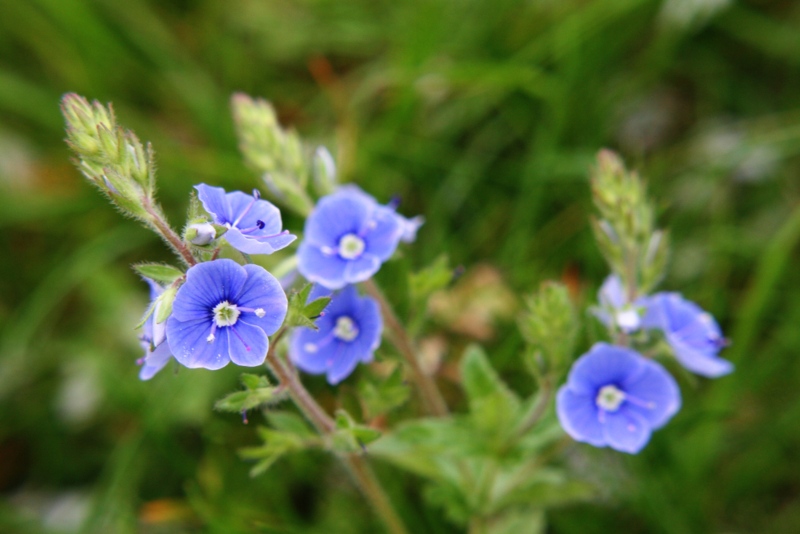
Also known as spiked speedwell, this perennial forms a clump of flower spikes lined with small star-like flower in shades of blue and purple. It reaches heights of 9 to 36 inches with an equal spread, depending on the cultivar. It blooms for several weeks in early summer and does best in full sun and average soil. It is hardy in USDA plant hardiness zones 3 through 8.
Unlike annuals, that bloom all summer, perennials typically bloom for a few weeks at the same time each year. To keep your perennial bed alive with color all year choose perennials with different blooming times. Some prefer to add annuals to the perennial bed to ensure there are always some flowers in bloom, but with careful planning you can stagger the blooming times of your perennials.





